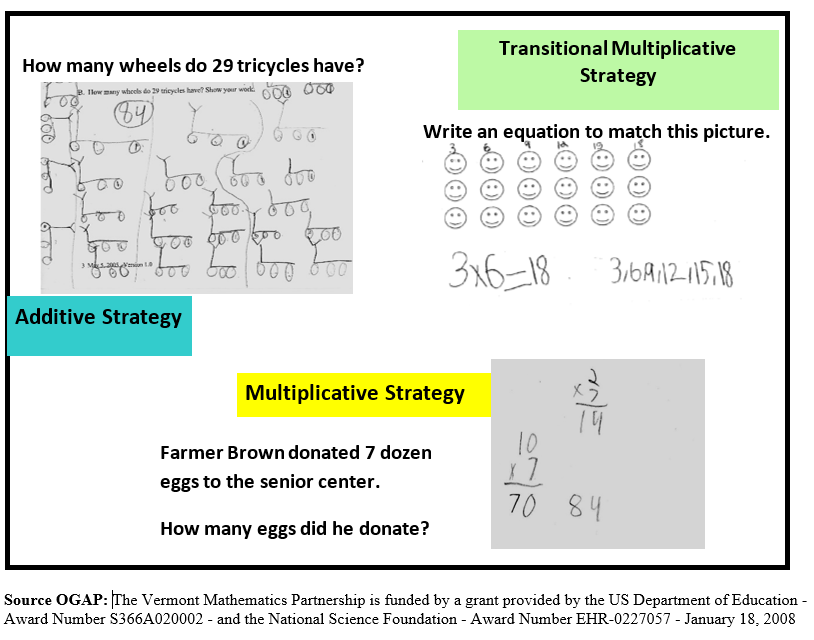February 21, 2019
The tools and strategies teachers use to create high-impact learning are essential for moving students from what they know today to what we want them to know and be able to do tomorrow. Ongoing and strategic use of formative assessment is an essential strategy that can positively impact learning for every student. Well-constructed formative assessments should be designed to uncover understanding (and misunderstandings), helping both the teacher and students locate where they are on the learning pathway compared to where they need to be.
Formative assessments can tell us what some students don’t know; however, assessment results often lack guidance for helping us decide what instructional actions to take next. If we think of standards as broader learning goals describing “destinations” for learning, then learning progressions represent a teacher’s “GPS-like view” to help each student get there—without taking wrong turns or unintended detours.
Why learning progressions are not the same as standards
“Many people confuse ‘standards progressions’ or curricular progressions with LEARNING progressions—however, they are not the same thing. Grade-level content standards do not show teachers how to get from one grade level’s content to the next grade level during a school year or across school years. Breaking down—or unpacking—a content standard is not the same as considering what the earlier instructional building blocks might be for students to demonstrate mastery of content over time” (Hess, 2018, p. 299).
For example, in a research synthesis (Hess, 2010) examining how students develop expertise in mathematics, we found compelling studies that said it is essential for students at any grade level to first conceptually understand the mathematical symbols used, before they apply procedures with them (e.g., students understand equivalence before using an equal sign, or the concept of “joining together” before using a plus sign). While there are standards about adding and standards about manipulating mathematical symbols, the connections among standards are not explicit in terms of teaching or how learning typically develops. A mathematics learning progression can provide both a verbal and a visual view of how most students progress from demonstrating novice to expert performance (see the figure below, showing a range of student work samples):

Four guiding principles of learning progressions
Drawing from various definitions and examples of learning progressions that have been developed, several interrelated ideas emerge that shape our thinking about what makes a well-constructed learning progression and how learning progressions differ from standards:
Principle 1: Learning progressions are developed (and refined) using available research
Evidence of use of available research is essential in articulating learning progressions. Otherwise, a learning progression is simply a “best guess” about how curriculum or standards change, rather than how learning is expected to develop. Three sources of research data that can inform the development of or refinements to learning progressions are:
- Cognitive science (e.g., how the brain processes and stores information);
- Domain-specific empirical research (e.g., how skills or conceptual understanding in a content area develop, common misconceptions at stages of learning); and
- Action research at the classroom, school, or district levels using formative assessment data to refine or “fill in gaps” of an existing curricular progression.
Collaboratively analyzing data from ongoing formative assessment provides a unique opportunity for teachers to develop a deeper understanding of how learning actually progresses across a school year.
Principle 2: Learning progressions are organized around the big ideas of each content domain that develop over time
These “binding threads” articulate the essential core concepts and processes that tie the (daily) learning targets to the threads of a larger learning progression. The big ideas—the “essence” of important concepts and essential processes—connect learning within and across grades. Measuring progress is only possible when these binding threads are clearly evident in the learning progression and describe increasingly more complex understanding of core ideas and enduring understandings (Hess, 2018).
The metaphor of “nested dolls” illustrates unifying threads of a learning progression. Each doll—like learning over time—adds more complexity and depth to the initial (tiny doll) stage of learning. What the dolls (or a learning progression) have in common are the essential core concepts, built upon and refined over time.
Principle 3: Learning progressions articulate movement toward increased understanding
Learning progressions are not linear or lock-step sequential routes for curriculum (like a scope-and-sequence). They articulate movement toward increased understanding in the same way a map provides both the network of interrelated routes and potential pit stops that might affect the journey. Increased understanding can be described in learning progressions in several ways:
- Greater depth of understanding;
- Increased breadth of application; ability to transfer learning to new contexts; and/or
- Movement from “novice” (naïve) understanding of the content to more sophisticated “expert” thinking and reasoning.
Principle 4: Learning progressions go hand-in-hand with well-designed formative uses of assessment
Knowing where an assessment might fall along a progression of learning can empower teachers to develop more useful pre- and post-assessments (along that unifying thread); plan next steps and strategically scaffold instruction; and, most importantly, promote student agency and reflection on progress, such as asking students (a) to compare their work to descriptors or samples of work along a progression; and (b) to explain how they might move to the next stage on the progression.
Regardless of the grade level or content area, educators can employ learning progressions to guide instructional decisions and enhance how they—and, especially, their students—currently use formative assessment results.
References
Hess, Karin. (2010). Principle author of Learning progressions frameworks designed for use with the Common Core State Standards in Mathematics K–12. National Alternate Assessment Center at the University of Kentucky and the National Center for the Improvement of Educational Assessment.
Hess, Karin. (2018). A local assessment toolkit to promote deeper learning: Transforming research into practice. Thousand Oaks, CA: Corwin.
Learn more
Did you know that Star Assessments include reading and math learning progressions built for your state standards? Connect with an expert to learn more.


